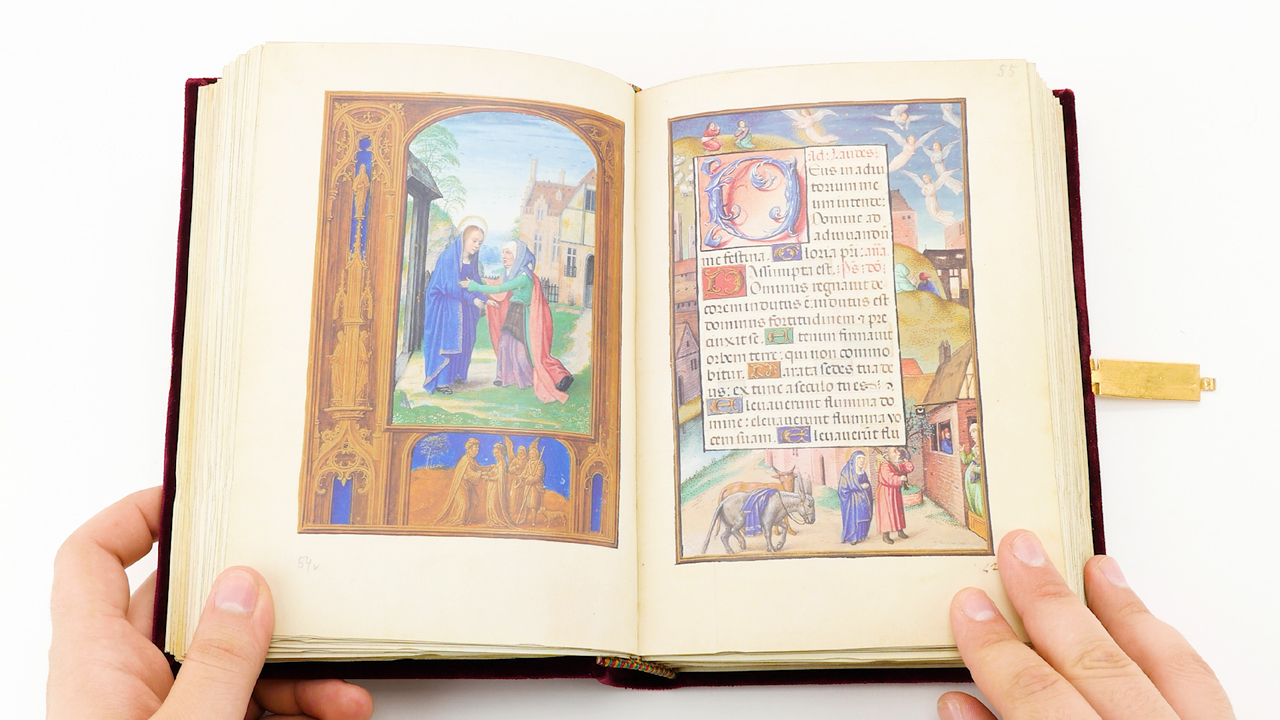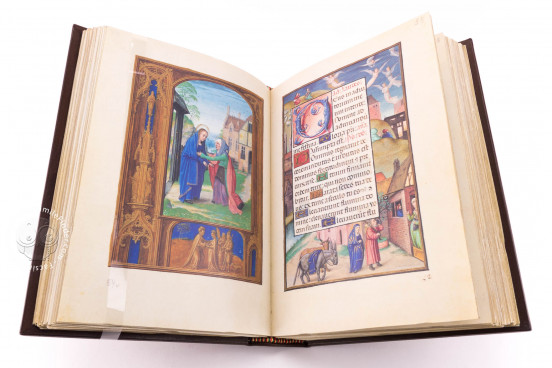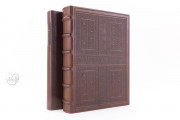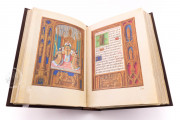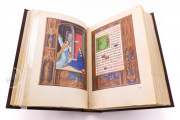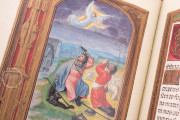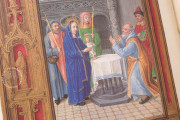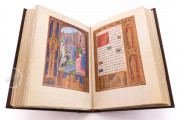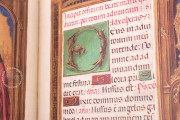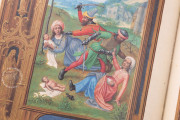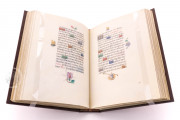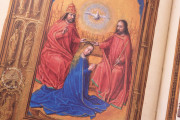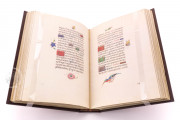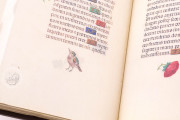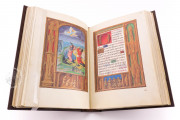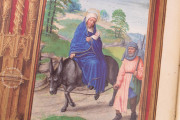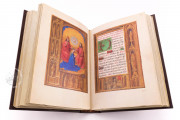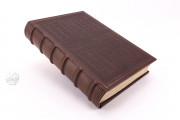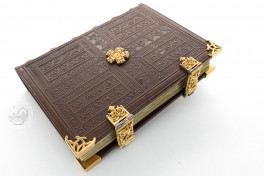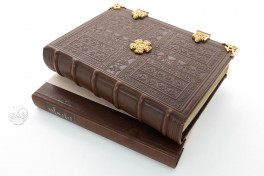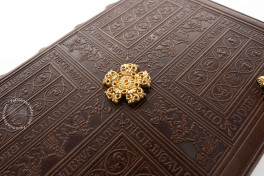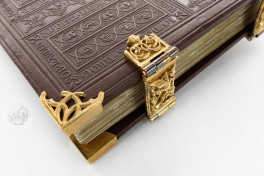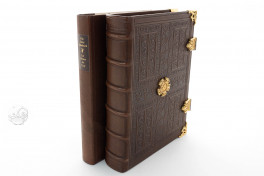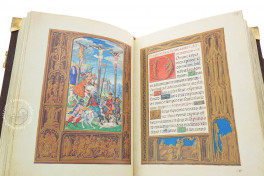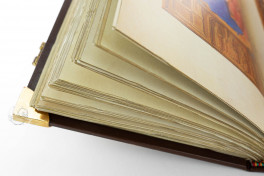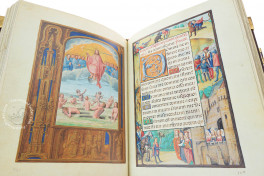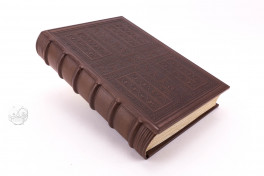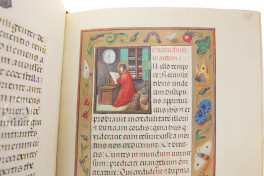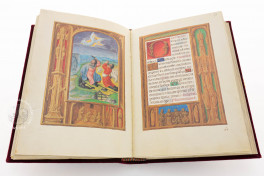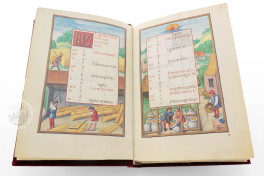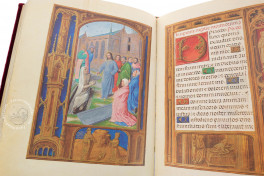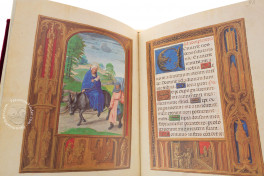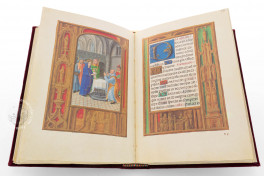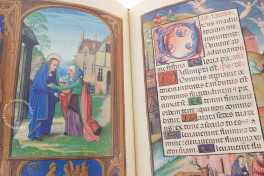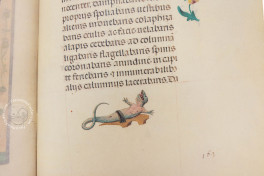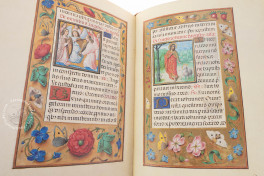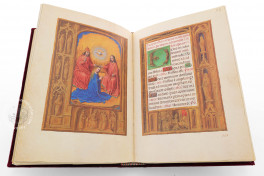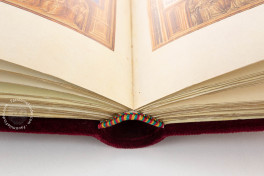The Croy Hours—also known as the Book of Drolleries—was probably made in the second decade of the sixteenth century in Ghent or Bruges. Its pictorial program is ambitious in its extent and its theological complexity. Combining the efforts of two—perhaps three—renowned artists, the Croy Hours boasts illumination of the highest quality, with fifteen full-page and nineteen smaller miniatures.
The manuscript is a book of hours, the favorite book for use in private Christian devotions in the late Middle Ages and the early modern period. Its core text is the Hours of the Virgin, a cycle of prayers focused on the Virgin Mary to be recited daily. The Croy Hours, like many contemporary books of hours, opens with a calendar.
Ambitious Full-Page Miniatures
Two of the best-known artists of the Ghent-Bruges school of illumination are thought to have contributed to the Croy Hours, namely Gerard Horenbout and Simon Bening, although the attribution to Bening has been disputed. It is possible also that Gerard David participated in painting the book's miniatures: his panel paintings certainly influenced the figural style and the compositions of some miniatures.
The scenes of the full-page miniatures are remarkably detailed, often populated by many figures acting out the sacred drama in ambitious landscape settings that appear to extend far into the distance. Many of the compositions recall contemporary panel paintings and prints, all fully realized in their present context and offering an unsurpassed display of masterful painting.
Breathtaking Borders
The full-page miniatures that mark the major divisions of the book's text appear on versos of leaves that face the beginning of a new text. The miniatures are surrounded by fictive frames of bronzed wood carved to include sculptures of holy figures and narrative scenes in relief. These frames, which also serve as the painted border of the page, are executed in camaïeu, i.e., using varying shades of the bronze color, against a deep brilliant blue or red. The borders of the facing text pages usually bear complementary borders of fictive carved wood frames in camaïeu.
Amusing Marginal Motifs
In addition to the outstanding series of miniatures framed in majestic architectural, floral, and narrative borders, the codex showcases a range of marginal motifs, from which the book derives its moniker as a book of drolleries (whimsical things). These drolleries occupy the margins of text pages and comprise flowers, insects, birds, butterflies, animals, gems, and often amusing imaginary creatures.
Made for a Couple of the Highest Station
It is unknown for whom the Croy Hours was made. Its generous use of parchment and the employment of the highest artistic talent to produce an impeccably presented compendium of prayers point to a patron of status and means. A miniature of a contemporary woman kneeling in prayer before a guardian angel introduces a prayer addressed to an angel (fol. 160r). A contemporary man is pictured twice in the book, in camaïeu in the fictive frame for the Nativity (fol. 64v) and in the final miniature of the book, where he is shown receiving the Eucharist (fol. 176r). Whoever these two are, they were almost certainly the manuscript's first owners.
Seen by the Rich and Famous
Early in its history, the book was used to collect the good wishes of the owner's friends. Two such inscriptions are particularly noteworthy. A declaration of lifelong friendship from Charles de Croy (1455-1527), who was well-connected with the Burgundian court and after whom the manuscript derives its nickname, and a note from "your master Charles," identifiable by his handwriting as Holy Roman Emperor Charles V (1500-1558).
An Original Luxury Binding
The Croy Hours retains its original binding made by the esteemed Louis Bloc (d. 1529) of Bruges. The brown calfskin is blind-tooled with cheerful animals and dancing peasants and musicians and retains its metalwork centerpieces, corner pieces, and clasps.
We have 3 facsimiles of the manuscript "Croy Hours":
- Croy-Gebetbuch Buch der Drôlerien (Deluxe Edition) facsimile edition published by Faksimile Verlag, 1993
- Croy-Gebetbuch Buch der Drôlerien (Standard Edition) facsimile edition published by Faksimile Verlag, 1993
- Croy-Gebetbuch Buch der Drôlerien facsimile edition published by Coron Verlag, 1993

